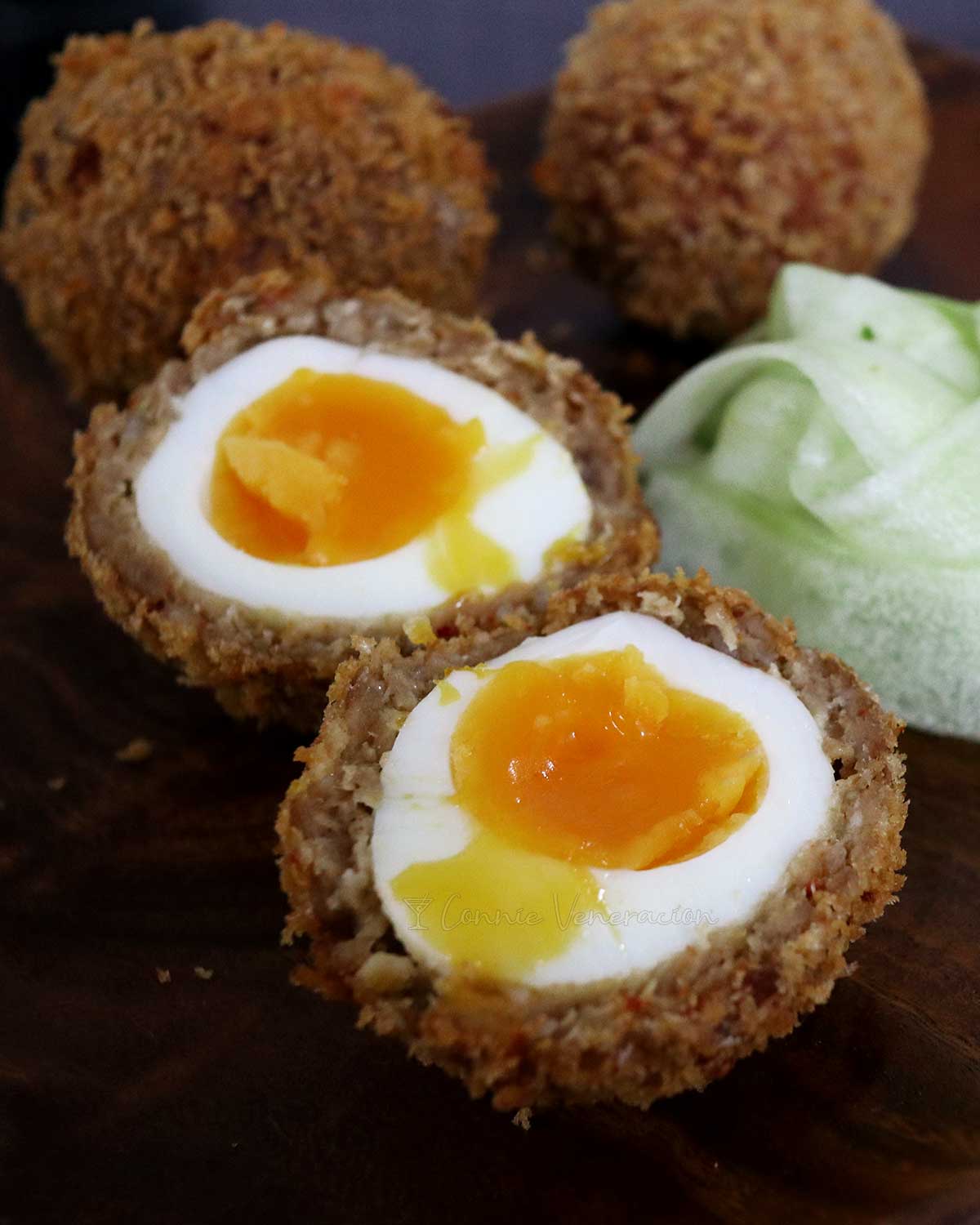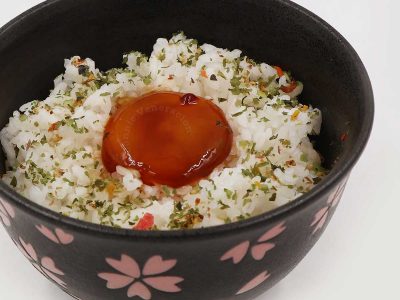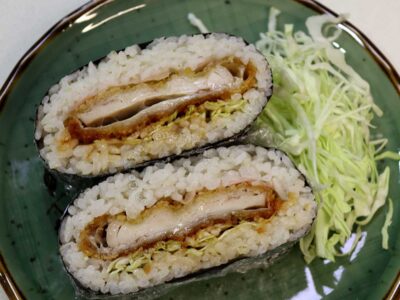Why these sausage meat-wrapped eggs are labeled “Scotch” is a mystery to me. If the dish originated in the UK then they should be called Picadilly eggs because the popular belief is that Fortnum & Mason invented the dish back in 1738 as a traveller’s food.
But not every food historian buys Fortnum & Mason’s claim. Egg wrapped in minced meat is a dish found in regions with older cuisines including South Asia, the Middle East and Southeast Asia. So, while Fortnum & Mason may have been the first to use sausage meat for the wrapping, the idea of using minced meat to encase boiled egg is more likely to have been borrowed from food that the Brits encountered in South Asia.
So, why do I still call them Scotch eggs if the dish is a riff of something that came out of Asia? Because we use sausage meat to wrap the eggs in, and that’s a British spin. We don’t serve the eggs with broth, sauce or gravy either the way they are served in Asia.
Now, about our home cooked Scotch eggs… Why are the yolks runny? Because that’s how we prefer them. You may use eggs with firm yolk by boiling the eggs longer but I urge you not to overcook them so that no grayish-greenish ring forms around the yolk. While the unsightly ring is not harmful to your health, it makes the egg less visually palatable.
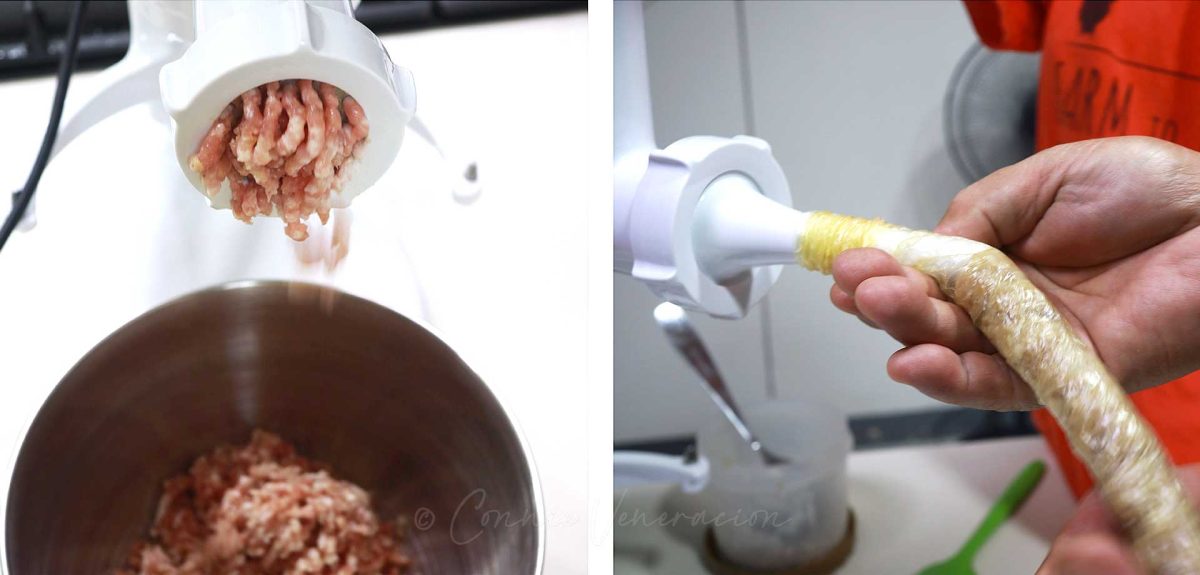
What kind of sausage meat is ideal? We make our own. When we were still experimenting with the seasonings and spices, we used to have tubs of sausage meat in the freezer that never got pressed into casings. That’s how these Scotch eggs came about.
But, if using store-bought sausage meat, know that there are two forms in which it is sold. One is pressed into a casing. The other is sold by weight without the casing. You may use either. Just make sure to discard the casing if using fully-formed sausages in casing.
How thick should the sausage meat casing be? It is tempting to use a lot of sausage meat for every egg. But the ideal thickness of the sausage meat layer is half an inch or less. If the sausage meat enfolding the egg is too thick, the Scotch eggs will take longer to cook. The prolonged cooking time creates steam between the surface of the egg and the sausage meat that can make the sausage meat layer burst.
Scotch eggs
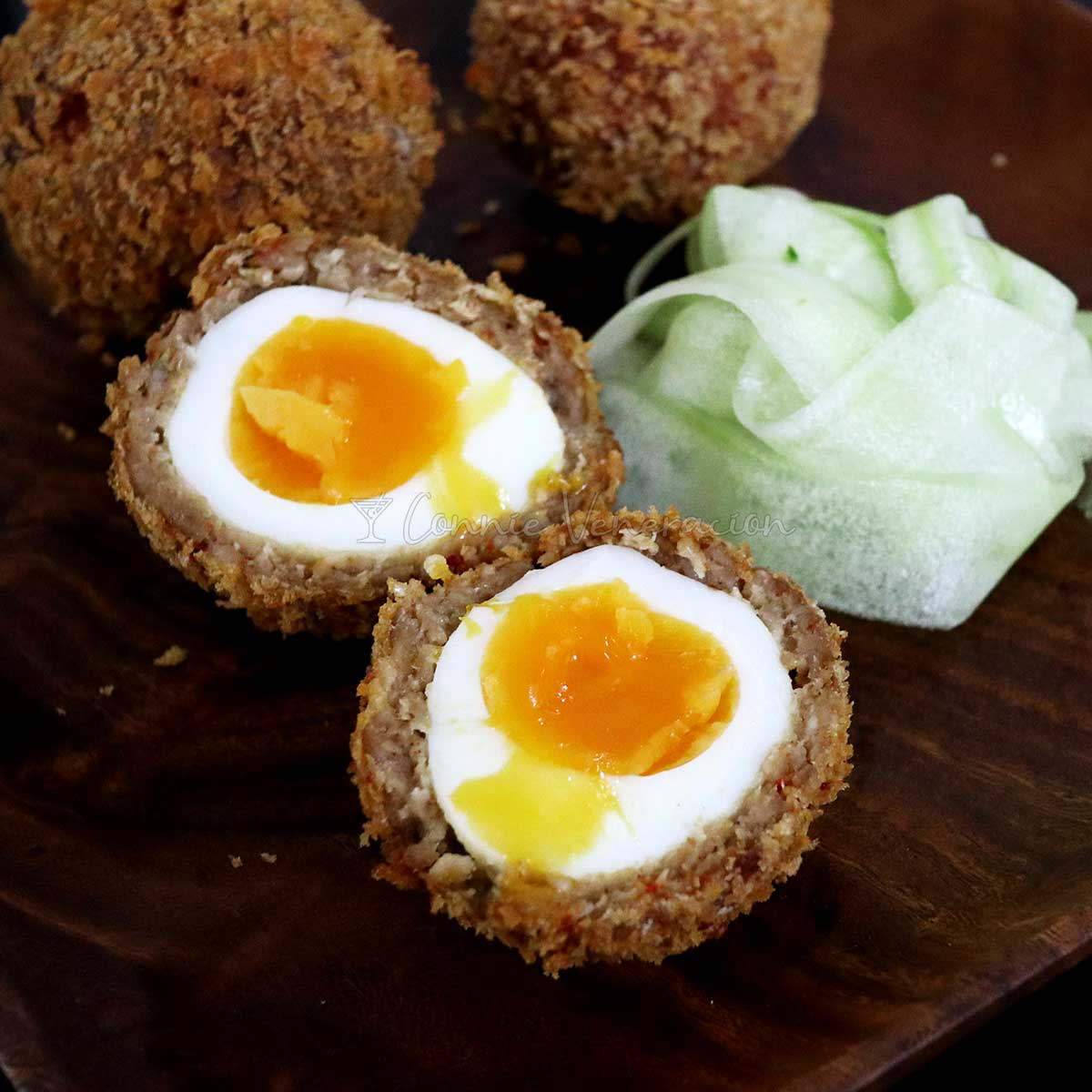
Ingredients
- 500 grams pork sausage meat we make our own sausage but store-bought is okay
- 6 large eggs soft-boiled or hard-boiled, and shelled
- ½ cup all-purpose flour
- 1 egg beaten
- 1 to 1 ¼ cup panko or ordinary bread crumbs
- cooking oil for deep frying
Instructions
- If using store-bought sausages, slit them press out the sausage meat and discard the casings.
- Divide the sausage meat into six equal portions.
- Wrap an egg with one portion of the sausage meat and do the same for the rest of the eggs and sausage meat.
- Place the prepared eggs in a shallow bowl, cover and chill in the fridge for about 30 minutes.
- Heat enough cooking oil in a pan to reach a depth of at least three inches.
- Place the flour and panko in two separate shallow bowls.
- Take the chilled eggs from the fridge.
- Dredge each egg in flour, dip in beaten egg and roll in panko.
- Deep fry the Scotch eggs at 350F until golden and crisp.
- Serve the Scotch eggs while hot.

